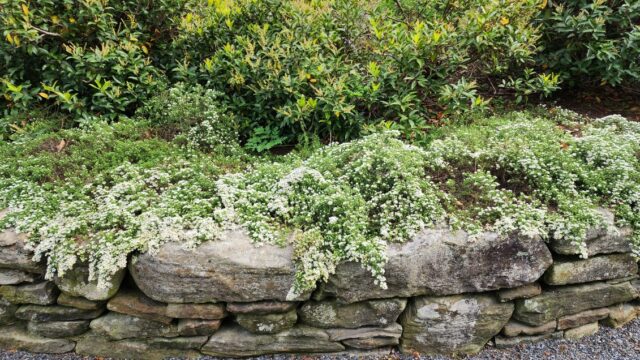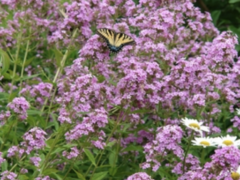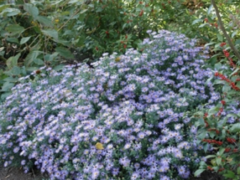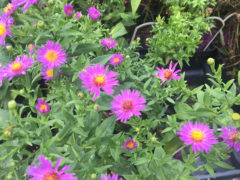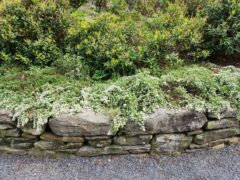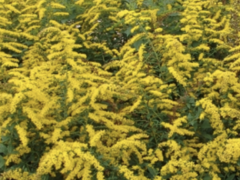Mt. Cuba Center is a botanical garden and research center rating native plant selections for their excellent aesthetic and wildlife value and outstanding garden performance. Click here to read about their work.
Read about five native plant selections that we grow from their highly-rated selections and add them to your 2024 garden must-have list!
‘Jeana’ tall garden phlox
Phlox paniculata 'Jeana'
2024 Perennial Plant of the Year
Found by and named after Jeana Prewitt of Nashville, TN, this selection is highly rated by the Mt. Cuba Center with outstanding mildew resistance and varying shades of fragrant, lavender-pink flowers midsummer through early fall. Foliage remains clean green while flower clusters create a tiered effect along upright, multi-stemmed branches. Expect a flurry of pollinator activity!
Thrives in moist to average soil in full sun to light shade. It can be found from Ontario to Florida and west to Minnesota to Texas. In some locations, it is theorized garden phlox found in the wild are escaped from cultivation. Plants in shade will have smaller flowers and weaker stems. Tolerant of drought once established. Deadhead flowers to encourage reblooming.
Nectar supports butterflies, skippers, hummingbird moths, sphinx moths and hummingbirds. Given a perfect 5-star rating, the only Phlox out of 66 to do so by Mt. Cuba’s Phlox Trials, "'Jeana' combines ecological value, disease resistance, and habit and form into one powerhouse package."
‘Bluebird’ aster
Aster laevis 'Bluebird'
A Mt. Cuba selection of the native smooth aster introduced by Dr. Richard Lighty, this tall, vase-shaped aster has large 1" blue flowers held in clusters on arching branches. Pinching back young shoots in June will produce a denser habit with more flowers. Staking is helpful by late summer if you forget to pinch, or plant with native grasses for support. An excellent nectar source for migrating monarchs and other late season butterflies. Ranked #1 in Mt. Cuba Center's aster evaluations. Asters host over 109 species of caterpillars.
‘Purple Dome’ aster
Symphyotrichum novae-angliae 'Purple Dome'
A compact selection recommended by the Mt. Cuba Center as a cultivar that draws loads of pollinators. Plants grow 18" tall and produce rich purple mounds of daisy-like blossoms that contrast with sunny yellow centers.
‘Snow Flurry’ heath aster
Symphyotrichum ericoides 'Snow Flurry'
The ‘Snow Flurry’ selection has a compact spreading habit and forms a ground cover with low arching stems with attractive gray-green foliage. This aster cultivar thrives in the sun and adapts to most soils. In early autumn plants produce frothy white flower panicles that draw the eye and beckon to a bevy of butterflies and other pollinators. This aster is also a host plant for the Pearl Crescent butterfly and the Wavy-Lined Emerald moth. Heath aster thrives in dry, sandy and gravel soils producing a storm of small white flowers in late summer and early fall. The parent species Aster ericoides is native to the northeast US and occurs in prairies, dry rocky woods, pastures, and railroad and roadside right-of-ways. ‘Snow Flurry’ is an older aster cultivar of unknown origin and recommended by the Mt. Cuba Center as a valuable native selection.
‘Golden Fleece’ goldenrod
Solidago sphacelata
Sprays of golden yellow flowers open from mid-August through September over semievergreen heart-shaped leaves. This lower-growing goldenrod makes and excellent groundcover. Attracts bees and butterflies, particularly hairstreaks, sulphurs and skippers. Monarchs also rely on solidago during their autumn migration. Native to limestone woodlands and rocky pastures from Virginia to Illinois and south to Kentucky and Georgia. Autumn goldenrod grows best in somewhat fertile, sandy, well-drained soils in full sun, but is tolerant of a wide range of conditions, from part shade and dry soil to moist soil in full sun. Cut back flowers after blooming to encourage rebloom. A Mt. Cuba Center introduction: "a chance seedling found in Eden, North Carolina and brought to Dr. Richard Lighty for Mt. Cuba’s evaluation."
